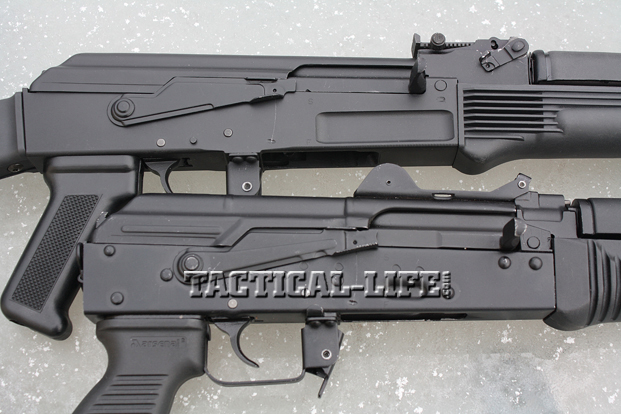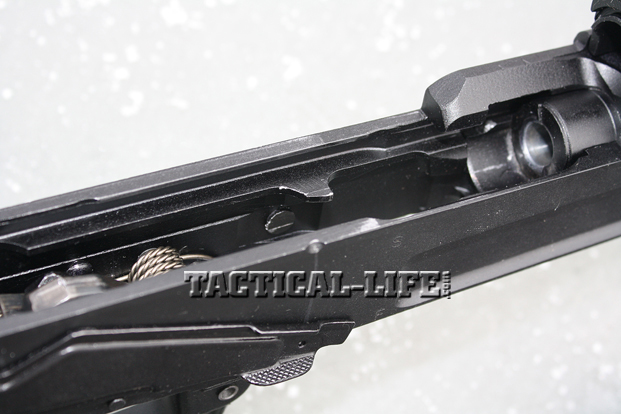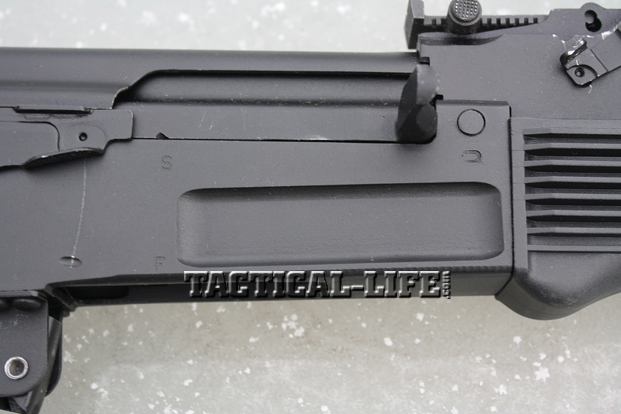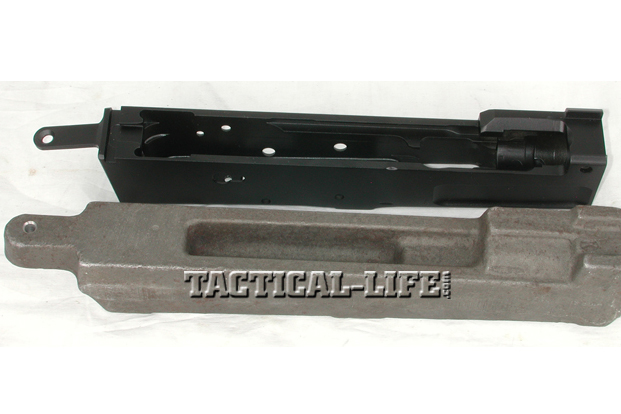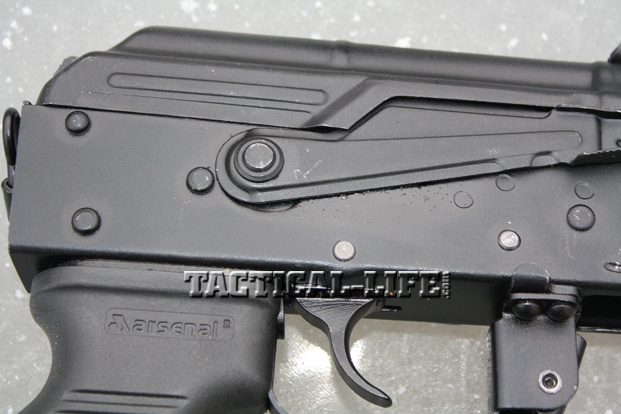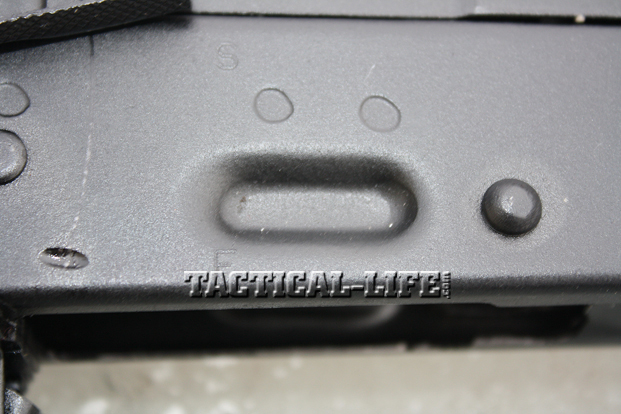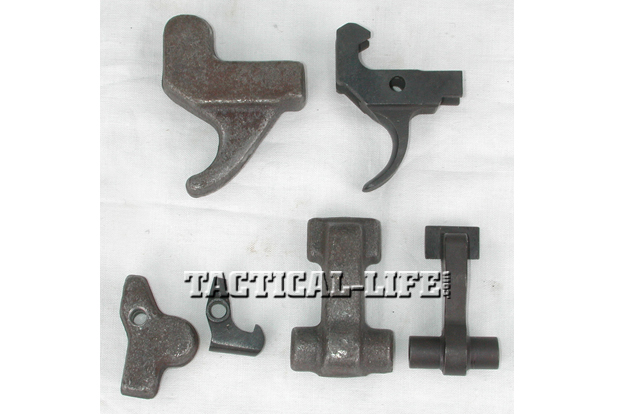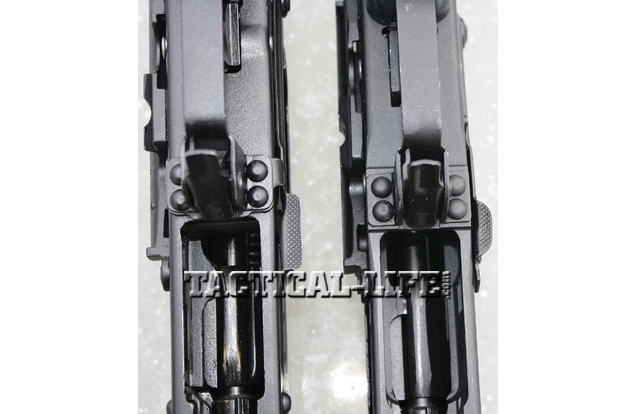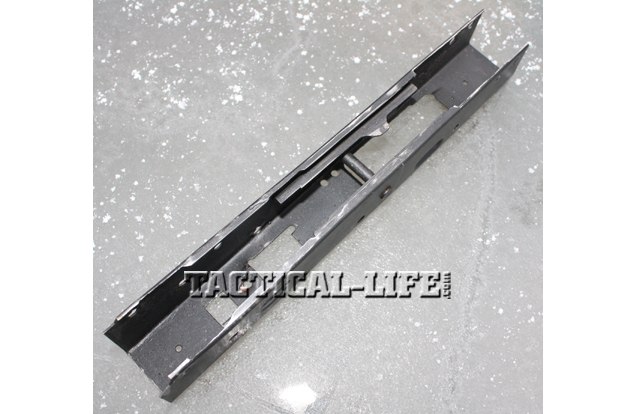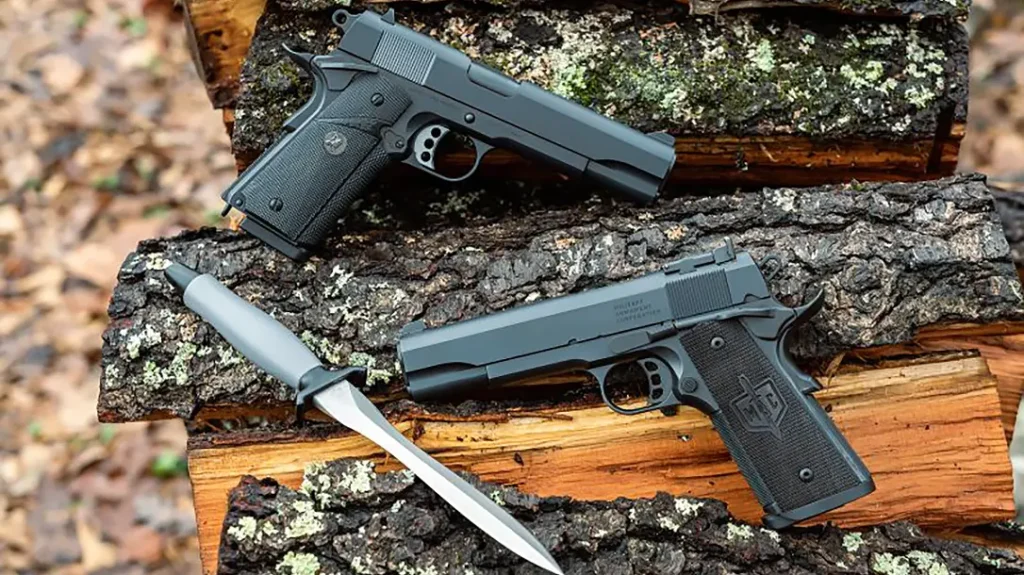Terminology can sometimes lose its way and, in the process, its clear meanings. Some terms are generic: The word “Krinkov,” though its origins are heavily debated, almost universally refers to an AK variant with a very short barrel. Some terms, such as “milled receiver,” reveal a lot about the manufacturing process, telling us a very specific tale about the subject gun. But whether it is by a series of misunderstandings, partially overheard conversations or creative marketing, there seems to be a lot of liberty taken with certain terms that were initially quite specific. Today I will discuss AK-47 receivers in the context of how they are manufactured, to try to shed a little light on the associated terminology.
Stamped Vs. Milled
Regardless of manufacturer, all Kalashnikov receivers have two things in common. First, they are made of steel. Second, if they have been built correctly, they have the potential to run quite well—and in my experience this has held true. The main difference between AK receivers is how they’re manufactured. Built from a steel “flat” that is drilled, bent and riveted to the front and rear trunnions for completion, stamped receivers are often between 0.4 and 0.6 inches thick—although differences on both ends of the spectrum can be found in some cases—and must be heat-treated for durability. If rails are added to a stamped receiver, then they must be welded in. Also, when the AK has an underfolding stock, the stamped receiver requires a center support plus another reinforcement plate. These provide rigidity and integrity to compensate for the stamped receiver’s lack of material compared with that of stamped receivers on full-stock AKs. Stamped receivers are finished in numerous ways, to specifications determined by each manufacturer. Milled receivers are built from a solid block of steel, where material is removed (“milled” away) to achieve the proper interior and exterior dimensions. This process allows parts that would otherwise be added to the receiver separately to be integral to it (i.e., forming one piece with the receiver). In the case of AK-type rifles, said parts include the rails and rear trunnion. Steel can start as a casting, where the metal is poured into a mold with a general shape and allowed to cool. Sometimes vacuum pressure casting is used to help minimize porosity. The steel can also be forged, in which it is compressed to force out imperfections through the process of increasing the density of the molecules. As with their stamped counterparts, milled receivers come in a wide variety of finishes.
Steel Clues
Although from a distance and to the untrained eye, stamped- and milled-receiver AKs may look very similar, there are several obvious differences between them. To identify a milled receiver, the first thing to look for is a large, horizontal, rectangular inset, above or in front of the magazine well. This inset, which can be as long as 5 inches, serves as a lightening cut to reduce the AK’s weight. Stamped receivers may or may not have dimples directly over the magazine well. These dimples act as a magazine guide and are usually over 0.1 inches deep and a bit under an inch wide. Another indicator of a stamped receiver is the presence of several visible rivets where the rails and trunnion are riveted in place (as opposed to machined into the receiver during the milling process). Triggerguards are usually riveted on the bottom of both stamped and milled receivers, so these rivets will not provide much help in identifying your receiver. However, once you remove the top cover, recoil spring, bolt and carrier, you can simply look inside where it will all be clear: Interior parts that are usually riveted or welded into the stamped receivers will be machined into the milled receiver.
Advertisement — Continue Reading Below
Choose Your Receiver
While I won’t be entering the debate on whether a stamped or milled receiver is superior, each has some pros worth mentioning. Compared with milled receivers, stamped receivers are lighter and less expensive to manufacture and arguably have a longer life in terms of round count; also, stamped receivers have parts interchangeability with numerous parts guns, so worn parts can be replaced. As for milled receivers, they are more rigid thanks to their one-piece design and, due to their precision manufacturing, have more uniform performance; and guns with milled receivers are arguably more accurate than those with stamped receivers. Ultimately, it is the end user’s preferences that will inform his or her choice between a milled- or stamped-receiver AK-type rifle. This author has owned dozens of AKs, with both stamped and milled receivers, and all have been assistive in eating all the ammunition my budget could spare. A more important question may be who manufactured the gun or, in the case of a parts gun built on an aftermarket receiver, who assembled it? (Having seen AKs of every level of quality, I’ve found this more important than the type of receiver.) Since numerous companies in numerous countries have been manufacturing AKs for over 50 years, we are apt to see more makes than we can count, in more configurations than we can keep up with.If you stick with a well-known manufacturer, you are bound to find yourself with a gun that will outlive you, depending on the punishment you expect it to endure. (The same goes with the builders who assemble AKs from receivers.) Even in my experience as someone who does long-term endurance testing, AKs typically continue to function and perform well beyond what the manufacturer typically recommends.
A quality receiver and a quality gunsmith (or manufacturer) can replicate the legendary performance of the original factory guns. Base receivers I’ve found to work well are Ohio Ordnance Works receivers and NoDak Spud receivers. And talented gunsmiths like Krebs Custom Guns and In Range, Inc. can make those guns look and perform like they came from Mother Russia. For factory guns, Arsenal, Inc. has never disappointed or failed to exceed any expectations. If you want something a little older, the Poly-Tech rifles imported before 1989 were beautiful and functioned fantastic. There are also several “diamonds in the rough” out there, which can be found with a little research. One of the guns I tested had been abused more than any other but kept eating everything available—it was a “low-end” Maadi, manufactured in Egypt. Whatever your interest and your budget, there is certainly an AK-type gun out there for you. The important thing is knowing what is available and what the terminology actually means. I hope I have provided you with a base for your continued learning and pursuit of the AK. ★
